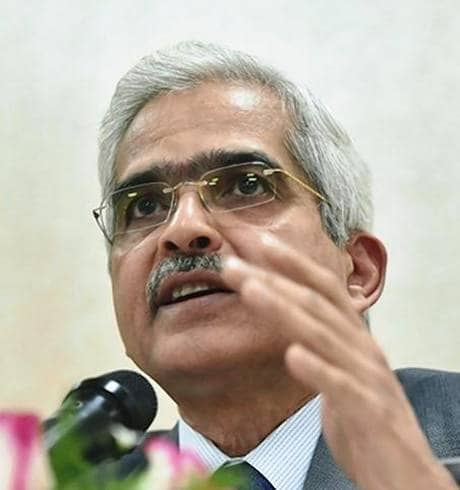Amid a growing demand for a reduction in interest rate in the upcoming monetary policy review scheduled for February 7, Reserve Bank of India (RBI) Governor Shaktikanta Das said wide divergences and volatility in inflation pose challenges for its assessment.
The case for a rate cut has been cited by economists and industry lobbies on the back of a sharp fall in retail inflation in recent months with the latest data showing December CPI inflation at 2.2%. “Although headline inflation has moderated significantly in recent years, its major components — inflation in food, fuel, and inflation excluding food and fuel — are exhibiting wide divergences this year, Mr. Das said in his first speech after taking charge in December.
While food inflation has turned negative since October 2018 and fuel inflation has been highly volatile, inflation, excluding food and fuel, remains sticky at close to 6%,” he said adding such wide divergences and large volatilities pose challenges for inflation assessment
Careful analysis of data
Balancing the objectives of inflation and growth under a flexible inflation targeting framework would warrant careful analysis of every new data, he said in his speech at the Vibrant Gujarat Summit.
In the last policy review meeting in December, RBI kept the repo rate unchanged at 6.5% and continued with the stance of calibrated tightening.
Observing maintaining price stability in the economy was a basic mandate for a central bank, the Governor acknowledged that easing of global crude oil prices augured well for inflation outcomes. On the external front, the Governor said a close monitoring of external sector was required, given the sharp movements in global crude oil prices and global financial market volatility.
These are the two global shocks that have implications for our CAD and financial flows, he said. Mr.Das also spoke about the challenges that Indian firms may face due to developments around Brexit. While Mr. Das spoke on a wide range of issues, he avoided making any observation on the fiscal deficit front when there is an expectation that the government may breach the 3.3% deficit target for 2018-19. The outgoing government would present its interim budget on February 1, days before of RBIs last bimonthly policy review of 2018-19 and the first one under Mr. Das.
On the banking sector, the Governor reiterated the central banks financial stability report assessment that gross NPA ratio of the banks could further come down to 10.3% in March 2019 compared with 10.8% in September 2018.
It will remain critical to ensure that further slippages are contained, he said.
He also observed that the progress on the bankruptcy framework has been encouraging and has resulted in better recovery. He said till January 3, 2019 the resolution processes have been approved in 66 cases, involving about ₹80,000 crore as resolution value to creditors.
He also said banks had improved their profitability ratios and capital positions and also the provision coverage ratio which increased to 52.4% in end-September 2018 from 48.3% in end-March 2018.
Bank credit is recovering from the risk aversion of recent years. Bank intermediation in the flow of resources to the commercial sector is regaining lost ground, he said.
The Governor, however, pointed out that the area where policy action is required is corporate governance in banks with a focus on transparency and accountability. He also described cyber risk as a major challenge and a comprehensive cyber risk and resilience policies and diligent implementation is critical.
Without mentioning the IL&FS crisis, the Governor said the debt default of a systemically important NBFC’ had highlighted the vulnerability and need for strengthening regulatory vigil on the sector and on asset liability management (ALM) framework in particular. He said the RBI intends to strengthen the ALM framework for NBFCs and harmonise it across different categories of these institutionsNBFCs with the objective of enabling them NBFCs to play a vital role in the economy.


